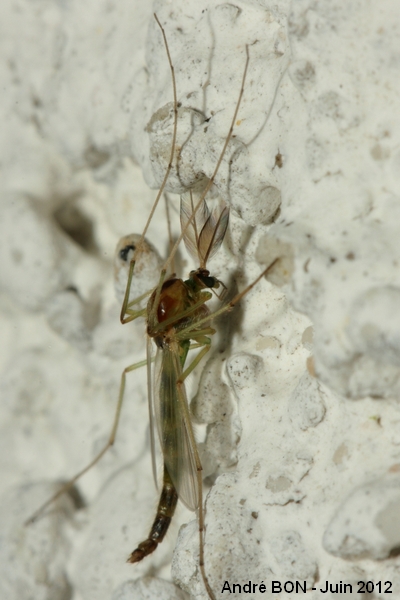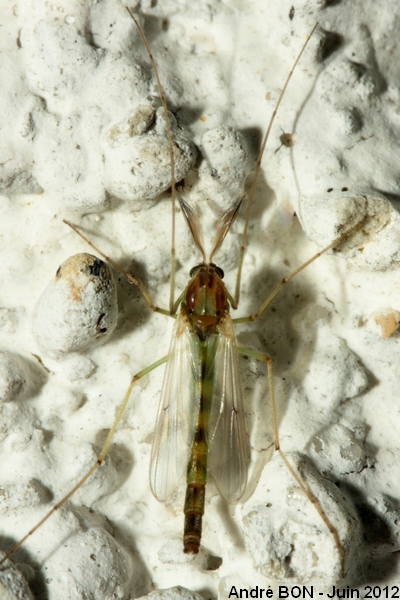

| Buzzer Midge (Chironomus plumosus (Linnaeus, 1758)) |


|
|
Scientific name: Chironomus plumosus (Linnaeus, 1758) Common name: Buzzer Midge French name: Chironome plumeux Order: Diptera Family: Chironomidae Wingspan : 9-13 mm. Biotope: The larvae grow in a large variety of stagnant waters and adults are observed in the direct neighbourhood. Geographic area: All the northern hemisphere. Observation period : April to September. |
Diptera of the Chironomidae family are often mistaken as mosquitos. Females lack the elongated mouthparts and so they do not bite. Adults are often a greenish colour. Males have feathery antennae, females have thread-like antennae. The pronotum protrudes and gives a rounded appearance to the thorax. The wings are shorter than the body, are aligned over it at rest. There are very few veins on the wings. The fore legs are very long. The first tarsus is longer than the tibia and the following tarsi. This family includes 1200 species in France. Chironomus plumosus has a black band at the back of each abdominal segment, one black submedian alar patch and yellowish tarsi with fringes of hairs. I have read that it is not possible to tell it apart from Chironomus muratensis and Chironomus nudiventris on pictures. The aquatic larvae are called Bloodworms. |
| [To know more about the Buzzer Midge] [Next picture] [Top] |

|
This may be the Chironomus plumosus species but with a remaining doubt I have only listed it as Chironomus sp. |
| [To know more about the Buzzer Midge] [Previous picture] [Top] |

|
Upper side view. The tarsi clearly bear fringes of hairs (better seen on the non-reduced picture). |